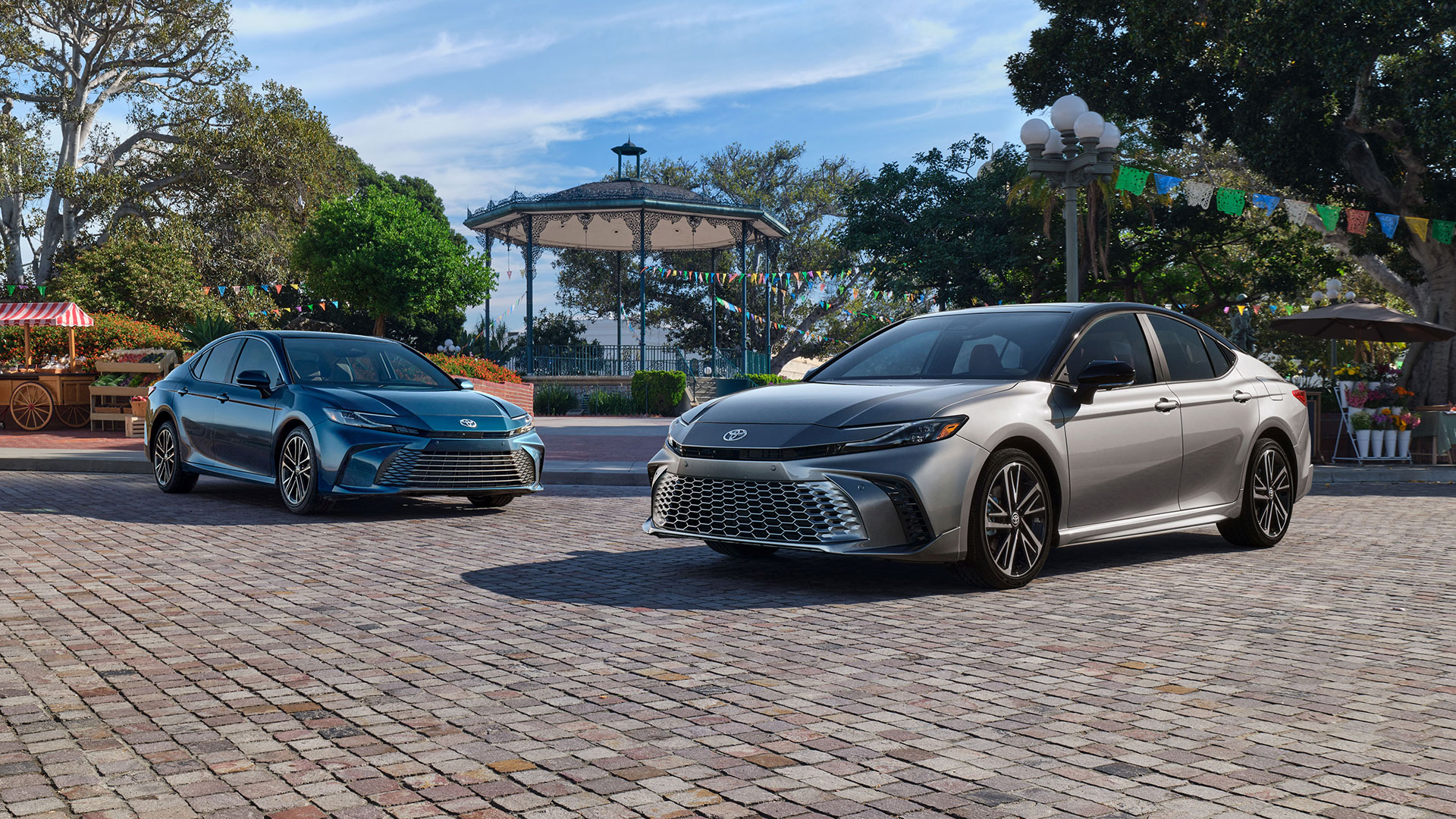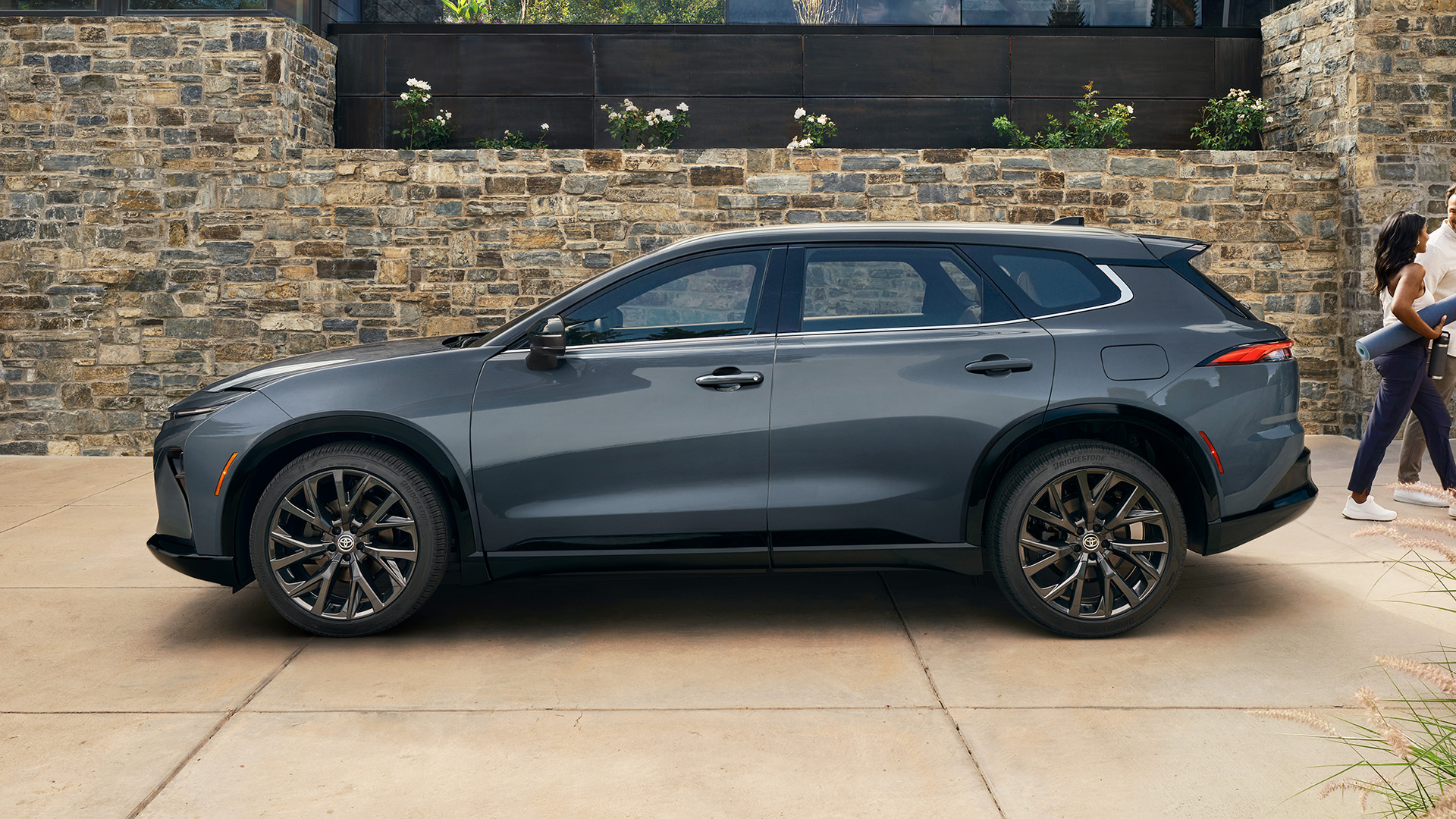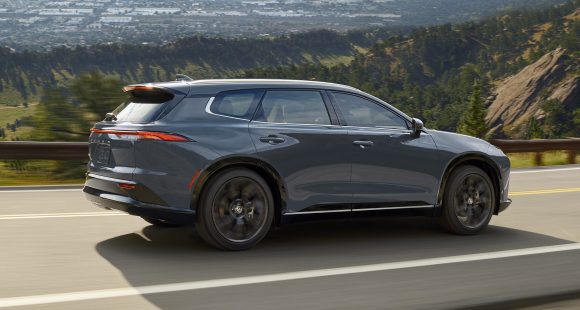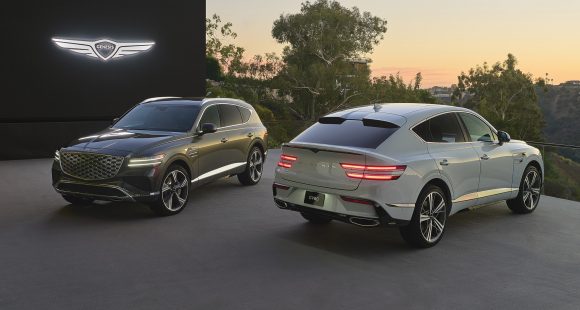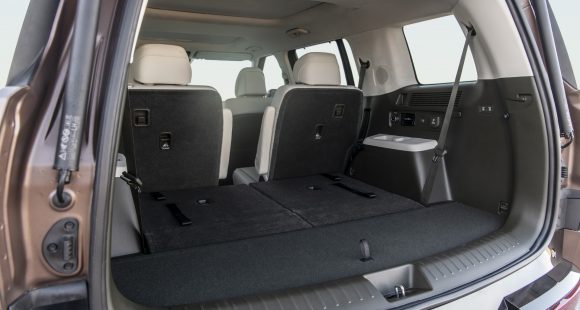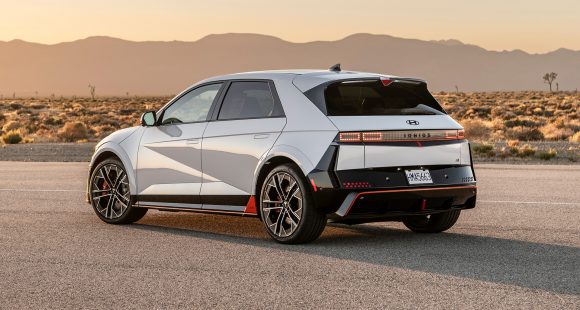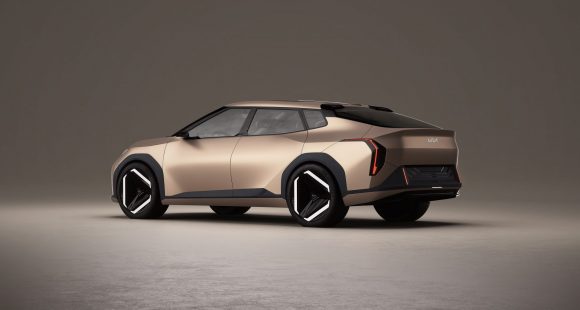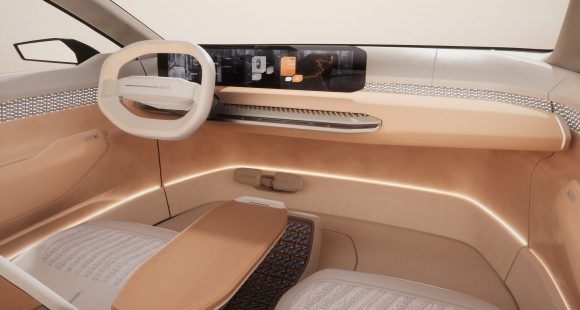Los Angeles Auto Show 2023
November 16, 2023We’ve got boots on the ground in Los Angeles for this year’s auto show. These meccas of manufacturers may not have the same appeal as they once did, but there’s still plenty of news coming out of LA– and we’ve got it!
We’ll have more in-depth looks at today’s reveals, but here’s the short and sweet of it!
2025 Toyota Camry and Crown Signia
Toyota made their big reveals a few days before the official show opening– the 2025 Camry sedan and the 2025 Crown Signia SUV.
We’ve provided detailed articles on both, linked above, so check those out for the full details. The short of it is, both of these models are entering Toyota’s electrified portfolio, offered exclusively as hybrid vehicles.
Yes, the new Camry is a hybrid-only. It’s a 2.5-liter four-cylinder paired with the fifth-generation Toyota Hybrid System (THS 5). Front-wheel drive is standard, putting out 225 horsepower, and an electronic all-wheel drive system is available on all grades, putting out 232 horsepower. They all wear Toyota’s “Beyond Zero” badge, signifying the brand’s mission to reduce carbon emissions.
The interior of the new Camry is not too shabby; available is a 12.3-inch infotainment screen and an equally-matched gauge cluster, but even lower trims receive solid digital real estate. Interior trimmings are different on all the grades; sport trims, for example, can be had in the vibrant Cockpit Red interior. The exterior is chiseled out with defining features, like the lights and “hammerhead” grille, but it’s still quite Camry.
It arrives in dealerships soon– really soon. Like, spring 2024 soon.
The Crown Signia is a reasonable departure from the Crown sedan. If you recall, the Crown nameplate returned to the states after about 50 years of dormancy, returning as a sedan with SUV-like traits. Now the Signia signs on as a real-deal SUV offering for the Crown lineup.
It’s also a hybrid, using a 2.5-liter 4-banger under the hood with the fifth-gen hybrid system. It puts out 243 horsepower, sent to the ground through a standard all-wheel drive system. Toyota currently estimates a 36 combined MPG. It uses the same TNGA-K platform as the Crown sedan, so we suspect handling and ride comfort to be at least on par with that.
The interior is standard-equipped with 12.3-inch screens for both the digital instrument panel and infotainment touchscreen. The split 60/40 second row can fold flat, providing, with the seat back extension boards, a 6.5-foot long cargo area. As is the case with the Camry, Toyota Safety Sense 3.0– the brand’s safety and convenience suite– comes standard.
And similarly, the Crown Signia will also arrive next year. Summer 2024, to be more exact.
Lucid Gravity
For many journalists, the Lucid booth was the first stop this Thursday morning, all eager to see the curtains pulled on the Lucid Gravity.
The Lucid Gravity serves as the brand’s next entry; an SUV that is, of course, all-electric. Some of the big things boasted about during the press event included 1.) room for up to seven adults, 2.) a high sense of both luxury and driving feel, and 3.) a range “in excess” of 440 miles, achieved through efficient design as opposed to simply throwing larger and larger batteries onboard.
That said, space is relatively abundant; owners can throw their surfboards, dirt bikes and friends into the back with relative ease, it would seem. With second- and third-rows folded flat, the Lucid Gravity offers over 112 cubic feet of cargo space. There’s also a substantial frunk, which is large enough for two adults to sit on and chill.
There’s two things very apparent in most EV designs– tech and minimalism. The interior is marked by a 34-inch curved OLED display “floating” above the new steering wheel, matched to the driver’s line of sight. If you’re looking for a bit of a break from the virtual world, you can switch the screens to their own minimalist mode, showing just the most important details. Over-the-air updates are supported.
Lucid claims a 0-60 mph time of less than 3.5 seconds, a 1,500 lb payload capacity and a towing capacity up to 6,000 lbs. Adopting Lucid’s 900-volt architecture means quick charging; specifically, recouping up to 200 miles in roughly 15 minutes (if hooked up to the right charger, of course). There’s an optional air suspension system dubbed “Zero Gravity,” said to adapt to the terrain in order to craft a smoother ride.
More details are sure to emerge as we get closer to the it’s launch; production is slated for late 2024. We do know the rough price, starting “under $80,000.”
2025 Subaru Forester
Yep, the Subaru Forester is entering an all-new generation for 2025, arriving at dealerships in spring 2024.
The sixth-generation model comes standard with Subaru’s 2.5-liter BOXER 4-cylinder, putting down 180 horsepower and 178 lb-ft of torque. A pretty standard affair, as is the Lineartronic CVT and the standard all-wheel drive. While not on display and specs still left under wraps, Subaru did use their press conference to announce an incoming hybrid variant. Exact powertrain details are yet to be discussed, but considering it’s slated to launch for the ‘26 model year, we should find out soon.
Like the most recent Impreza (also revealed at the LA Auto Show, last year), the new Forester will come with a 10-percent stiffer chassis thanks to stronger welds and additional adhesive. It also comes with a version of the WRX’s dual-pinion electronic power steering rack which should improve handling as well.
Looking at it from the outside, the 2025 Forester is 183.3-inches long, riding on a 105.1-inch wheelbase. They all ride with a minimum road clearance of 8.7-inches, measuring 68.1-inches tall and 72-inches wide. Cargo space is accessible by a Forster-first, an available kick sensor-activated rear tailgate. The new exterior is of a self-described sleek and contemporary vibe, featuring LED lighting elements and a new front-fascia sporting the brand’s updated “star cluster” emblem. There have been some aerodynamic improvements made to the design; like the air outlet at the trailing edge of the front wheel opening, helping to reduce lift on the front tires and, thus, improve stability.
Heading inside, you’ll find an 11.6-inch STARLINK multimedia system, available for the first time on a Forester; though, dual 7.0-inch units are the standard. STARLINK safety is also available, offering services like SOS emergency assist, automatic collision notification, and more. The rest of the interior uses contoured elements and textured trim pieces to avoid visible damage, and a dark headliner is said to hide scuffs from the loading/unloading of people and packages.
Starting trims include the Base, Premium, Sport, Limited and Touring. Pricing will be available as we get closer to launch. We’ll also find out more about the impending hybrid variant in due time.
Genesis GV80 Coupe and SUV
Before the official media day, Genesis unveiled the 2025 GV80 Coupe and SUV.
You may recall the GV80 Coupe Concept from the New York International Auto Show earlier this year. Well, it’s now come to fruition, and it’s not far off from what we saw then. It combines SUV practicality of the G80 with a newer, sleeker profile, spearheaded by a double-layered Crest grille and LED headlights. The same treatment has been given to the redesigned GV80 SUV; the two-line exterior elements. New wheels, updated accents and larger intakes further define the GV80s.
The GV80 SUV can be had with either a 2.5-liter inline-four, turbocharged to the effect of 300 horsepower, or a 3.5-liter twin-turbo engine, bumping power up to 375 horsepower. The GV80 Coupe will also have two engine options, including the same twin-turbo 3.5-liter combined with a 48-volt electric supercharger, meeting a total system output of 409 horsepower.
We expect more details to arrive for these 2025 models to arrive in 2024.
Hyundai Santa Fe and IONIQ 5 N
We’ve known for a while about both of these products, but today marks the North American debut of both the 2024 Santa Fe and the 2025 IONIQ 5 N.
Here in LA, Hyundai introduced the new Santa Fe with its “Open for More” development concept. This was centered around its new, wider liftgate opening, as well as its more spacious interior. The 2024 Santa Fe rides on a longer wheelbase, providing more second and third-row legroom; however, the big shakeup here is in the aesthetics. The new ‘Fe is bolder and boxier, starting with the minimalist grille that makes you think it might be an EV, with H-shaped headlamps on either side.
We say “think” because, well, the Santa Fe isn’t an EV. Standard is a 2.5-liter turbo outputting 277 horsepower and 311 lb-ft of torque, and it’s paired to an eight-speed dual-clutch transmission. There’s also an available 1.6-liter turbo hybrid, estimated at 232 horsepower and 271 lb-ft of torque, paired to a six-speed automatic.
Almost mirroring the exterior, the interior incorporates a variety of H-shaped motifs, and horizontal and vertical design elements. The 12.3-inch screens are arguably the highlights; but, the UV-C sterilization compartment is also pretty slick. As mentioned, there’s three rows of seating, with second-row captain’s chairs available.
A new XRT model made its global debut. It serves as an adventurous compliment to the premium urban-crawling Calligraphy trim. Beyond the darkened trim pieces and cladding, the XRT comes with black roof rails with crossbars and 30-inch all-terrain tires. The XRT rides with an extra 1.5-inches of ground clearance and, with the optional towing package, can pull up to 4,500 lbs.
The new Santa Fe goes on sale in March 2024, with the hybrid arriving sometime this spring.
A bit farther out is the IONIQ 5 N, the all-out performance variant of Hyundai’s EV SUV. The IONIQ 5 N’s dual-motor all-wheel drive system is able to put out an estimated 641 horsepower with the “Boost” function engaged; “N Grin Boost,” to be exact, a temporary acceleration grab that lasts for 10 seconds. Even without the boost function enabled, the 601 horsepower output is nothing to scoff at, nor is the 3.25-second 0-60 mph time and 162 mph top speed (electronically limited).
Power is provided by an 84 kWh battery pack, which can be recharged through a 350kW DC Fast Charger at speeds up to 238kW. Like the IONIQ 5, expect a 10-to-80-percent recovery time around 18 minutes.
Outside and in, the N isn’t a total departure from the normal model; but, it wears familiar N flair. Like other N models from Hyundai, the IONIQ 5 N razzles and dazzles with red accents along the bottom trims, complimenting the red brake calipers. The sport-influenced styling is very apparent, from the blacked-out front fascia to the 21-inch wheels wrapped by 275/35R21 Pirelli P Zero tires. Further adding to the style is the lowered stance, now 0.79-inches closer to the ground. It’s also widened by 2.0-inches to accommodate the aforementioned tires.
The interior is characterized by the N steering wheel (fun fact: it has the “N” logo on it, the very first time) and N seats. These buckets also sit lower than the normal seats and come with extra bolstering. In tandem, the pedals have been optimized for track driving situations; all of this may come in handy when initiating a drift, which the IONIQ 5 N can do with the N Drift Optimizer.
If all this sounds familiar, you may just be thinking of the Kia EV6 GT. The IONIQ 5 N is not a carbon copy and should be worthy of standing on its own, but it’s in a familiar neighborhood. And as we discovered during our initial Road Test and continue to enjoy with our Long Term tester, it’s one fun EV, so the IONIQ 5 should be equally thrilling.
Kia
And speaking of Kia, they drew a crowd of their own with the updated 2024 Sorento. We’ve known for a while that the Sorento was due for a facelift this coming model year, but some details were yet to be fully fleshed out.
One of the big additions is a new X-Pro variant, designed for the more adventurous Sorento customer and joining the X-Line model. The X-Pro adds 17-inch wheels wrapped by BF Goodrich all-terrain rubber. Towing capacity is increased to 4,000 lbs, so you can bring along more appliances and camping necessities for your weekend getaway.
The updated Sorento, speaking beyond the “X” namesake, can be had in either front- or all-wheel drive. It starts with a standard 2.5-liter I4, good for 191 horsepower and 181 lb-ft of torque, sent through an 8-speed automatic. The upper trims will step up to a turbocharged 2.5-liter unit, upping the stakes to 281 horsepower and 311 lb-ft of torque, sent to pavement through an 8-speed wet dual-clutch transmission.
This updated Sorento is said to borrow innovative elements from Kia’s EV9 all-electric three-row SUV. We should expect to see the Sorento on dealer lots in the first quarter of 2024. Upcoming Sorento HEV and PHEV units will arrive later as 2025 models.
Although the Sorento arguably took the center stage, two concepts were put on display for journalists to ogle over: The EV3 Concept and EV4 Concept.
If you’re familiar with Kia’s electric vehicle nomenclature, the number following “EV” tends to denote the size. Considering the size of the two-row EV6 and three-row EV9, you may think the EV3 and 4 would be one less denomination of rows– not quite, but the EV3 is indeed a bit smaller than the rest, with the EV4 not much larger.
The EV3 is an electric compact crossover, effectively distilling the EV9 into a more size-conscious package. Thanks to the disconnected C-pillar the roof almost has a floating effect. The wheel arches are cut at asymmetrical angles, and the silhouette is foreign from most of what we’ve seen from the brand thus far. The inside is rather conceptual in nature, taking the minimalist approach to the fullest extent. A very open front floor is only broken up by the two pedals.
The EV4 is a tad lower and more swept back, taking on a sedan presence. It features a low nose and long tail, accented by a stylized roof spoiler. The headlamps are vertical, mounted about as far out on the front as they reasonably could be. It’s an exercise in aggressive design at the corners meeting smooth design on the longer panels. The interior is designed as cocoon-like (not in a scary way; a welcoming way), and has a similarly sparse design. Well, ‘sparse’ as in minimalist, not missing features. If the ambient lighting and handwoven fabric is too busy for you, the HVAC interface can be tucked up into the center console when not in use. As you can imagine, natural dyes and recycled cotton are used in the name of sustainability.
While we can’t expect either of these concepts to arrive anytime soon, they do point towards an interesting future for Kia.
Honda
Honda arrived at the show with the usual suspects: Civics, CR-Vs, Accords. But front and center were two models– one concept, one upcoming– that have us very, very interested.
The Prelude Concept made its North American debut on the showfloor; unfortunately, we don’t have any new information regarding the powertrain, performance, etc. But, seeing this two-door coupe concept live has fueled our fire even more. You can read up on what we do know and our excited speculation at the link above.

The Honda Prologue was right behind it. We’ve already talked about this future all-electric SUV before, but here’s the short of it.
The Prologue will launch with front- and all-wheel drive variants, the latter of which putting out up to 288 horsepower and 333 lb-ft of torque. Power is supplied from an 85kWh battery pack, and range is estimated at around 300 miles. It’s planned to use GM’s Ultium platform, just like the returning Acura ZDX (“returning,” now turned EV SUV), but we suspect the Prologue and ZDX aren’t quite a “copy + paste” solution from the sister companies.
Ford

The Blue Oval arrived at Los Angeles to quite fittingly give the 2024 Mustang California Special its first public debut.
The new California Special is a $1,995 appearance package for 2024 Mustang GT coupes and convertibles. It brings a bunch of blue accents to the exterior, including the grille, wheels and badges; and the interior as well, with blue upholstery and stitching. Aside from that, you can expect the same accouterments found in a premium Mustang, and although the new GT/CS will pack the latest a 5.0-liter Coyote V8, buyers can pick between the automatic or manual transmission.









